
| Purple Moonbeam (previously known as Pseudodipsas innotatus) LUCIINI, THECLINAE, LYCAENIDAE, PAPILIONOIDEA | (donherbisonevans@yahoo.com) and Stella Crossley |
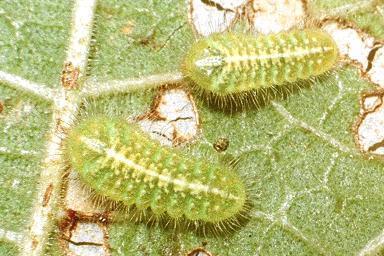
(Specimen: courtesy of
Helen Schwencke)

| Purple Moonbeam (previously known as Pseudodipsas innotatus) LUCIINI, THECLINAE, LYCAENIDAE, PAPILIONOIDEA | (donherbisonevans@yahoo.com) and Stella Crossley |

(Specimen: courtesy of
Helen Schwencke)
This caterpillar is green with a pale yellow dorsal line.
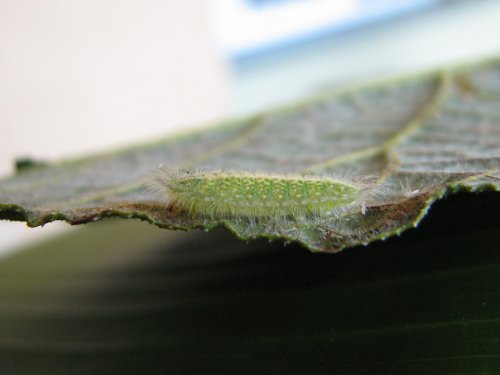
The caterpillar is hairy, rather like the stems and leaves of its foodplants. It feeds on the foliage of various fig trees (MORACEAE), including
The caterpillar feeds on the underside of a leaf, leaving the upper surface intact. The feeding tracks turn white in due course, which can be a handy guide to locating the caterpillars. The caterpillars are sometimes attended by ants of various species.
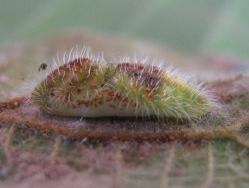
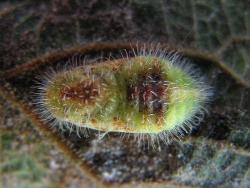
The pupa is green with brown patches. It is attached to the underside of a foodplant leaf. The pupa has a length of about 1 cm.
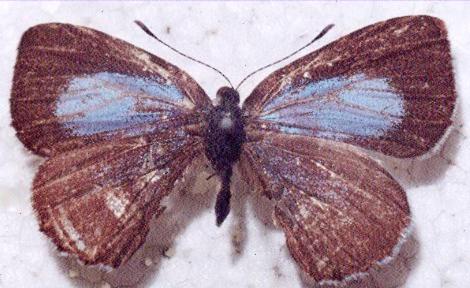
On top: the female adult butterflies are iridescent blue with a wide black border around each wing.
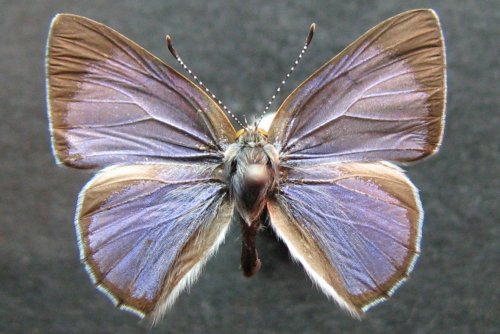
The male butterflies are purple with narrower black borders than the females.
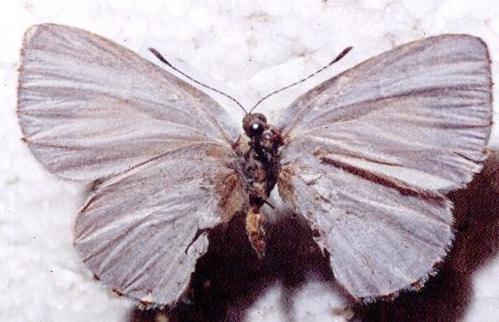
Underneath: they are a silky grey, with a number of small black spots on each hindwing: three along the tornus, and one on the hind margin.
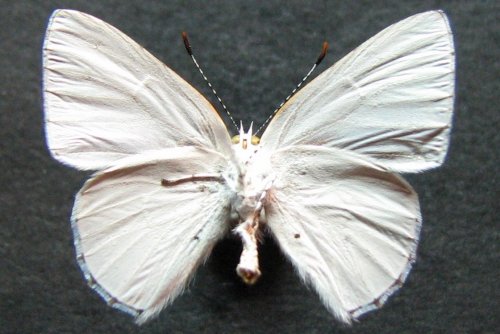
The eggs are white, round, flattened, and deeply pitted, with short spines. The eggs have a diameter of about 0.6 mm. They are laid singly on the underside of leaves of foodplants.
The species occurs in Australia as the controversial subspecies evinculis Wind & Clench 1947, in
and as innotata in
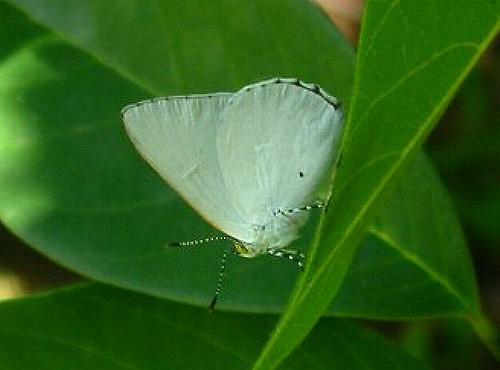
Further reading :
Michael F. Braby,
Butterflies of Australia,
CSIRO Publishing, Melbourne 2000, vol. 2, pp. 683-684.
Wesley Jenkinson,
Life history notes on the Purple Moonbeam, Philiris innotata
(Miskin, 1874) (Lepidoptera: Lycaenidae),
Butterflies and Other Invertebrates Club,
Metamorphosis Australia,
Issue 105 (March 2023), pp. 18-24.
William Henry Miskin,
Descriptions of new species of Australian diurnal Lepidoptera,
Entomologist's Monthly Magazine,
Volume 11 (1874), p. 165.
Frank Jordan & Helen Schwencke,
Create More Butterflies : a guide to 48 butterflies and their host-plants
Earthling Enterprises, Brisbane, 2005, pp. 36, 63.
Donald Peter Andrew Sands,
Review of Australian Philiris Röber (Lepidoptera: Lycaenidae), with notes on variation and descriptions of two new subspecies from Cape York peninsula,
Australian Entomologist,
Volume 42, Part 4 (2015), pp. 219-252.
 caterpillar |  butterflies |  Lepidoptera |  moths |  caterpillar |
(updated 24 June 2008, 5 August 2024)